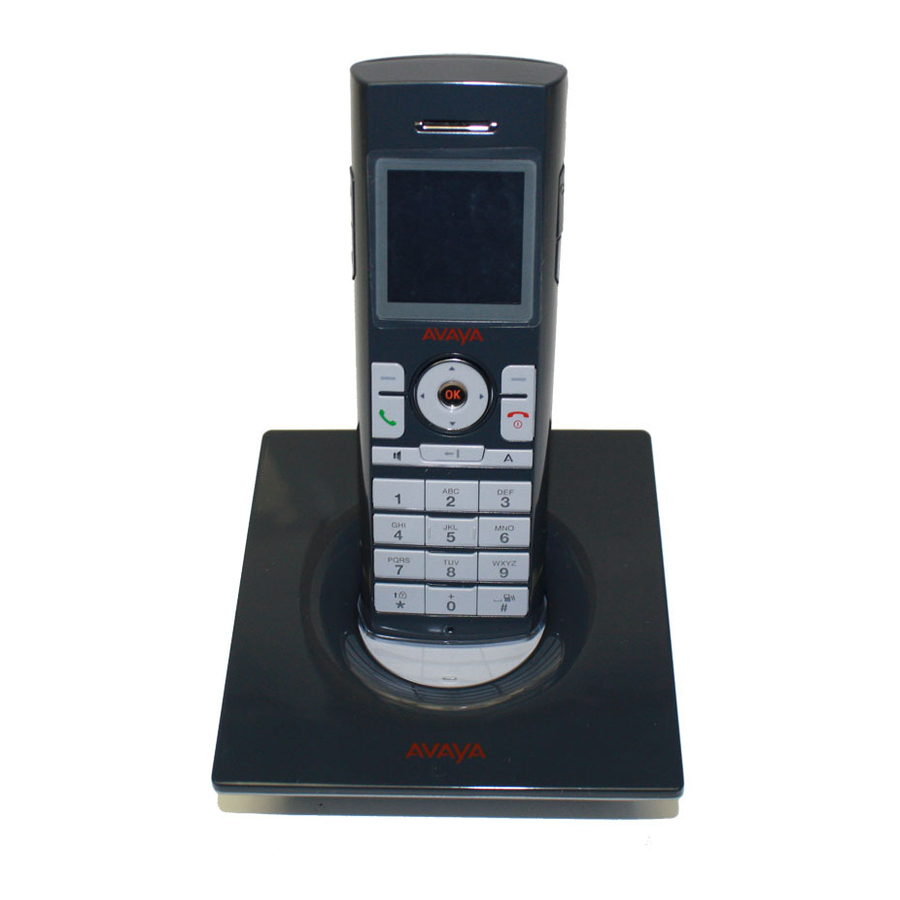Avaya 3645 Посібник з монтажу - Сторінка 4
Переглянути онлайн або завантажити pdf Посібник з монтажу для Телефон Avaya 3645. Avaya 3645 19 сторінок. Co-existence with ip wireless handset offering
Також для Avaya 3645: Короткий довідник (2 сторінок), Посібник з конфігурації (8 сторінок)

Installation Guide
walk as they talk, while data users are usually stationary or periodically nomadic. Wireless voice
requires full mobility while data generally requires simple portability. Wireless telephones are typically
held close to the user's body, thus introducing additional radio signal attenuation. Data terminals are
usually set on a surface or held away from the body. This factor may result in reduced range for a
wireless telephone as compared with a data device, therefore the WLAN layout should account for
some reduction of radio signal propagation.
2.1.1 Overlapping Coverage
To provide comprehensive coverage for Wi-Fi telephony applications, APs must be positioned with
sufficient overlapping coverage to ensure there are no coverage gaps, or dead spots, between them.
As wireless telephones move about the workplace, they seek out other APs to handoff to and re-
associate with, in order to maintain the most reliable network connection. A properly designed Wi-Fi
network will provide for a seamless handoff between APs, ensuring excellent voice quality throughout
the facility.
The WLAN layout must factor in the transmission settings that are configured within the APs. The
transmission of voice requires relatively low data rates and a small amount of bandwidth compared to
other applications. The IEEE 802.11 standard includes automatic rate switching capabilities so that as
a user moves away from the AP, the radio adapts and uses a less complex and slower transmission
scheme to send the data. The result is increased range (coverage) when operating at reduced
transmission rates. When voice is an application on the WLAN, APs should be configured to allow
lower transmission rates in order to maximize coverage area. If a site requires configuring the APs to
only negotiate at the higher rates, the layout of the WLAN must account for the reduced coverage and
additional APs that will be required to ensure seamless overlapping coverage.
2.1.2 Signal Strength
To provide reliable service, wireless networks should be engineered to deliver adequate signal
strength in all areas where the wireless telephones will be used. The required minimum signal
strength for all Avaya wireless telephones depend on the 802.11 frequency band and modulation
used, and the data rates enabled on the AP. Recommended signal strength characteristics are
summarized in the following table.
Rate
(Mb/s)
Best
Prac-
tices
(dBm)
Octiober 2008
2.4GHz DSSS/CCK
1
2
5.5
11
6
-
-70
-65
-64
-60
64
802.11
Radio Mode
11, 5.5, 2, 1
802.11b
11 only
54, 48, 36, 24, 18, 12, 11, 9, 6, 5.5, 2, 1
802.11g
54 only
54, 48, 36, 24, 18, 12, 9, 6
802.11a
54 only
2.4GHz OFDM
9
12
18
24
36
48
-
-
-
-
-
-
63
61
59
56
52
48
Enabled Data Rates (Mb/s)
5GHz OFDM
54
6
9
12
18
24
-
-
-
-
-
-
45
60
59
58
56
53
Required Minimum
Signal Strength (RSSI)
-70dBm
-60dBm
-60dBm
-45dBm
-60dBm
-45dBm
36
48
54
-
-
-
49
47
45
4
